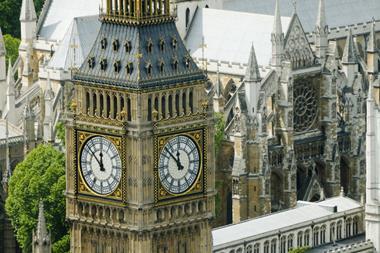Analysis by the UK government has shown charging in both trust and insurance defined contribution (DC) schemes stands higher than estimates – and on the cusp of, or above, a proposed charge cap.
The Department for Work & Pensions (DWP) conducted more than 1,300 interviews with trust and contract schemes, as well as the 11 largest insurance DC providers in the UK.
Through its research, and analysis of scheme data, the department found the average annual charge for members was 75 basis points in trust schemes and 84bps in insurance schemes.
Previous estimates by the Association of British Insurers (ABI), a lobby group for insurance-based pension providers, said the average charge among its members was 52bps.
Average figures also differed significantly when split by the size of the scheme.
A small insurance scheme (six to 11 members) was paying as much as 91bps, while a trust scheme (with 12-99 members) was paying 94bps.
Average annual charges fall as scheme size increases, the government said.
An insurance scheme with more than 1,000 members fell below the 75bps threshold recently touted by the DWP.
Charges for the largest trust schemes marginally fell below those of the larger contract-based schemes, with an average charge of 42bps.
The government had been consulting on implementing a cap on member charges within DC schemes.
The cap, which was initially expected to be between 50bps and 100bps, was aimed at schemes used for the rollout of auto-enrolment, with expectations for its application across all schemes.
However, the cap was expected to be implemented by April this year, until it was announced by pensions minister Steve Webb that complications had forced the government to delay by at least a year.
This sparked a backlash from opposition ministers in the UK Parliament, amid accusations the government had given in to vested interests in the insurance industry.
In its research, the department added that the size of the scheme, along with adviser commissions, contributions and when the scheme was set up, impacted the most on charging levels.
Trust schemes set up before 1991, on average, had a higher charge by 10bps to those set up after 2001.
The difference between schemes in the insurance sector was 20bps.
The use of active member discounts (AMDs), which results in non-contributory members facing additional charges, and another aspect the current government aimed to abolish, were also analysed.
Government research showed only 3% of trust schemes operated such a policy, with marginally more insurance providers doing so, at 10%.
On average, non-contributory members faced an additional 38bps charge in their DC fund compared with active members.












No comments yet